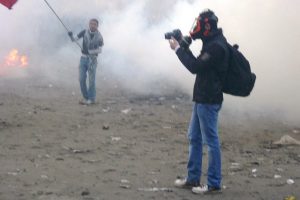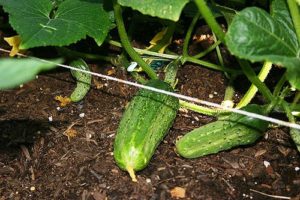
One of those ubiquitous news portals this week outed The Australian Women’s Weekly for a string of what we in the journalism business used to call ‘howlers’. The AWW meekly apologised for mis-naming TV personality Richard Wilkins as ‘ Rachael’ in its front cover feature, one of several glaring errors. The knife job from Mumbrella (the news portal to which I originally referred), drew sharp comments from (ex) journalists. As the auld wifies used to say in my homeland: “People in stane hooses shouldnae throw glasses”.
To err is human, someone said, and I forget what you had to do to be divine. Mistakes happen across all levels of business and industry, in office jobs, in the pubic service and even, dare I say it, the arts. (For those of you who were paying attention, I wrote ‘pubic’ rather than ‘public’ to demonstrate how easy it is to mis-type). The skill of a journalist/editor is to catch the mistake and fix it on the read-through. The errors made in the Richard Wilkins profile will have caused red faces, but it is hardly a sign of a failed State. Wilkins and family laughed it off, like the good sports they are.
Hard to believe, but when I first entered a newsroom with intent, the newspaper still employed a proofreader. The paper was just moving to offset printing, retiring their one surviving Linotype machine. Pages would be ‘pasted up’ and the proofreader’s job was to read every word, including headlines, photo captions and advertisements. The proofreader was basically looking for typos and literals, as the time had long passed to save a reporter’s bacon on a legally dodgy story. The lawyers would already have done their own version of proofreading, at a much higher hourly rate.
Honest mistakes are made in the media, and the people who make them are often mortified. We are seeing more of it now because newsrooms have been gutted and fact-checking is not valued.
But then there are the deliberate editorial choices made about controversial content. The Australian’s editor, Christopher Dore, made a rare editorial decision to go public about the furore which arose on social media over a cartoon by Johannes Leak, construed by many as racist. Dore defended the cartoon as a satire of presidential candidate Joe Biden’s reference to ‘little brown girls’. If you missed it, The Conversation’s balanced piece by RMIT journalism lecturer Janak Rogers, goes into the topic in depth. tful place in the world. We used to call such kerfuffle ‘bees in a bottle’ – give the jar a good shake. Nobody will get hurt unless you take the lid off.
But gee, they make a lot of noise.
Sadly, it is what we have come to expect from The Australian, a conservative national broadsheet newspaper launched in 1964. Its opinion columnists tend to be dry conservatives and the political tone is decidedly to the right. The Oz, as it is known, has many critics. It often rates mention in news outlets whose sole mission is to critique journalism.
Mumbrella, Crikey, the ABC’s Media Watch program and other current affairs programs leap upon journalists who write slanted stories or indulge in epic errors of fact. Increasingly, social media is the place where people froth about journalism today, singling out examples of appalling spelling and misuse of grammar, hostile beat-ups and stories that are just plain wrong. I do feel like critics should be more tolerant of mistakes in regional news outlets, as staffing levels in this sector have been drastically reduced. In some cases there are not only no proofreaders, there are no sub editors either. (Ed: Even FOMM has an editer (sic).
I know many people are dismayed by the state of journalism and the rush to the bottom by those who survived the purge. In May, the situation became much worse for those who rely on local news. News Corp announced the closure of more than 100 regional daily and non-daily titles. Some survived as digital-only and a few newspapers are still being printed. Our locals, The Warwick Daily News and The Border Post (Stanthorpe), are no longer printed. A selection of Warwick district stories appear in The Chronicle (Toowoomba) and the WDN and BP have online editions. But it’s not the same. And we have to buy firelighters.
Fortunately, the Southern Free Times, owned by the Star News Group, which publishes community newspapers, has continued to print, albeit with a short hiatus. Editor Jeremy Sollars said the Free Times went into print hibernation from April to early June. He continued to produce an on-line edition, working part-time from home.
“We had fully intended to resume printing again at some point but did not have a clear idea when that might have been.
“We saw the announcement by Warwick Daily News and The Border Post (Stanthorpe) in late May as a clear opportunity.
“Since our first print edition in early June we’ve had a tremendous response from both local advertisers and readers. Clearly our community values a printed news product, complemented by website/social media.”
The Free Times covers the Warwick/Stanthorpe/Inglewood and Border regions – currently 8,000 copies a week. The paper is not home delivered, but is bulk-dropped to around 100 retail and community outlets.
“I believe that print publications like the Free Times have a very strong and healthy future in regional centres like Warwick and Stanthorpe,” Mr Sollars said.
Despite the shake-up of a venerable industry, there’s something for everyone out there in the on-line world. My best advice to those with a thirst for reliable, quality journalism is (a) buy a Tablet or an iPad and (b) source a mix of free and paid news feeds. All on-line news portals allow you to customise news and filter it to the topics you prefer, so you don’t get overwhelmed.
In no particular order, I recommend ABC Online, SBS News, The New York Times,The Guardian, the Conversation, the New Daily and Crikey (the ‘stayer’ of independent papers, founded in 2000). Then there’s the left-leaning Saturday Paper and The Monthly, both published by the Schwartz Media Group. If you want another view of world news, try Al Jazeera. When it comes to business and economics, The Economist carries a hefty annual subscription, but worth it if you have a vested interest in the fate of your investments.
At which point I should add that a subscription to The Australian includes access to the Wall Street Journal.
For those with budget constraints, I recently discovered The Independents
which aggregates news from more than 50 sources, some of them mentioned here. It’s set out in an easy to browse format.
Or if you are plain fed up with the news and its follow-the-pack mindset, you could instead binge watch (in no particular order), all seasons of Grey’s Anatomy, Homeland*, The Bureau*, Breaking Bad*, Goliath*, House of Cards, The Crown, The Bridge* and Homecoming. By the time you come up for air (Christmas 2021), it might all be over. Or it might be like yesterday: The Oz publishing offensive cartoons and being castigated for it (and as usual, not at all contrite).
*confronting and/or violent content



